Your Pantry Is Lying to You: Foods You’re Probably Storing All Wrong
I spent years working in professional kitchens, from fast-paced restaurants to teaching the basics to new cooks. And if there’s one thing I learned, it’s that your pantry isn’t just a closet for food—it’s an environment. If you don’t get that environment right, you’re literally throwing money in the trash. I learned this the hard way with a walnut-crusted fish special. We stored a huge case of walnuts in a warm spot near the prep line. By Friday, the dish tasted… off. Like old paint. It wasn’t the fish; the heat had made the walnut oils go rancid in just a few days. That costly mistake taught me that where you store something is just as important as how you cook it.
In this article
- Don’t Have Time for a Full Kitchen Overhaul?
- The Four Enemies Lurking in Your Pantry
- The High-Fat Group: Stop Making Your Food Taste Like Crayons
- The Flavor Faders: They Won’t Hurt You, But They Won’t Help You Either
- The ‘Refrigerate After Opening’ Crew: This Is a Safety Issue
- The Tricky Ones: Where It Gets Complicated
- Lightning Round: What About…?
- Ready to Upgrade Your Pantry? Here’s Your Shopping List
- Inspiration:
Most of us organize our kitchens by habit. Cans go here, boxes go there. But honestly, that system is flawed. A lot of the food we toss in the pantry is slowly losing its flavor, nutrients, and safety. This isn’t just a list of what to move. It’s about understanding the ‘why’ so you can stop wasting food and get more enjoyment out of what you buy.
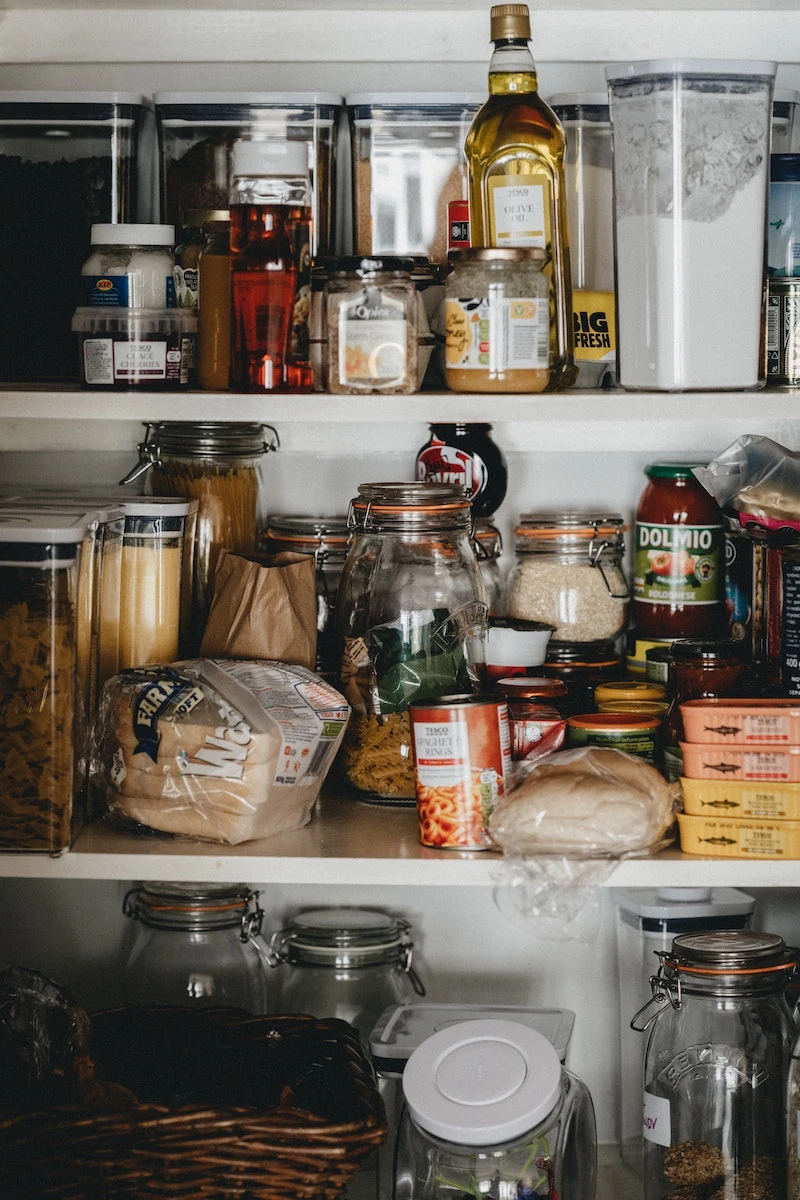
Don’t Have Time for a Full Kitchen Overhaul?
I get it, you’re busy. If you only do three things after reading this, do these:
- Move your open maple syrup to the fridge. Yes, the real stuff. It can and will grow mold.
- Put your whole wheat flour (and brown rice) in the freezer. The healthy oils in them go bad at room temp.
- Go smell your ground spices. If your cumin doesn’t smell like much, it’s not doing anything for your food. Toss anything over a year old.
The Four Enemies Lurking in Your Pantry
Before we get into specific foods, you need to know what you’re fighting against. There are four main culprits that ruin food: temperature, light, oxygen, and moisture. Every storage trick is just a way to outsmart one of these.
- Temperature: Your pantry is almost certainly in the food ‘Danger Zone’ (between 40°F and 140°F), where bacteria have a party. Heat from a nearby oven or even a sunny spot just speeds up the decay.
- Light: Sunlight is a nutrient killer. It breaks down vitamins and helps turn fats and oils rancid. That’s why good olive oil comes in dark tins or bottles.
- Oxygen: Air is the enemy of freshness. It causes oxidation, which is what makes a cut apple turn brown and, more importantly, makes oils, nuts, and whole grains taste stale and bitter.
- Moisture: Too much humidity invites mold and makes crispy things soggy. Too little can dry out foods like potatoes.
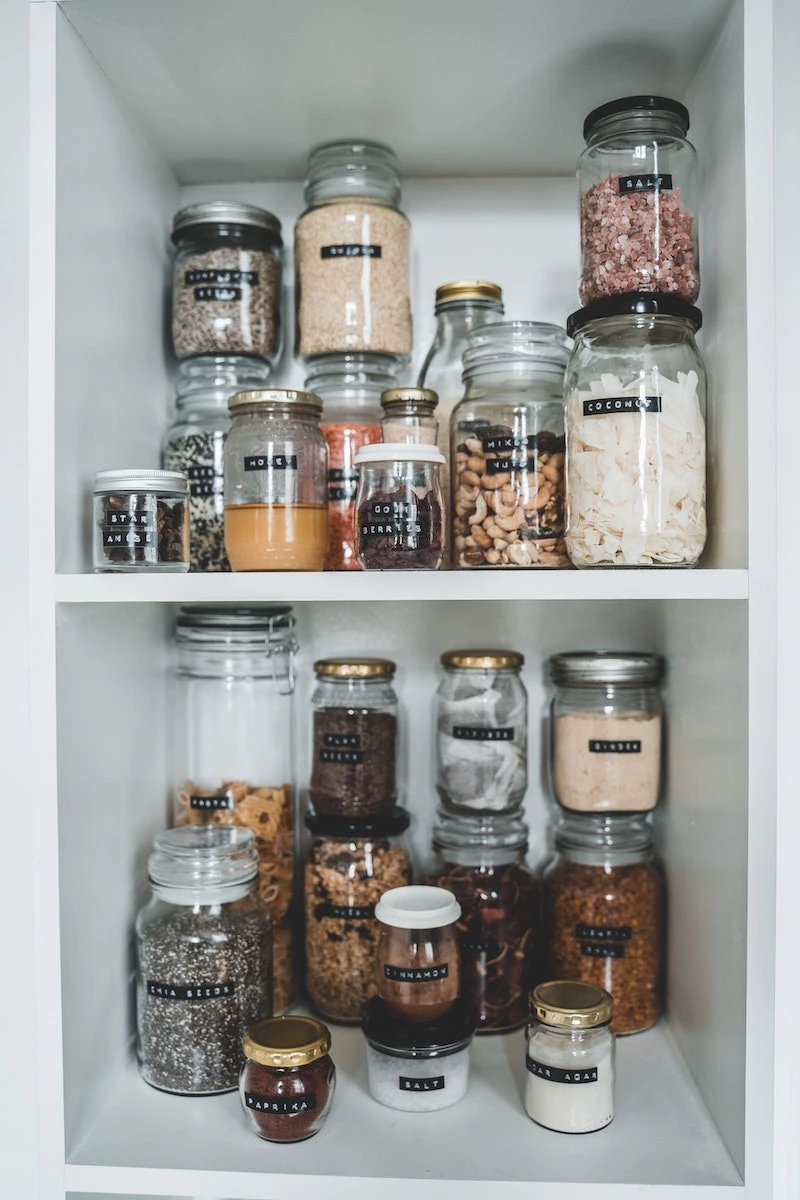
The High-Fat Group: Stop Making Your Food Taste Like Crayons
This is the group of foods most likely to go bad without you realizing it. They’re high in natural oils, and when those oils go bad, they get a stale, bitter, or waxy smell. Once that happens, there’s no fixing it. You have to toss it.
Nuts, Seeds, and Nut Butters
This one surprises everyone. Because they’re sold in the snack aisle, we assume they belong in the pantry. Nope. Their delicate fats are super vulnerable to going rancid. This applies to raw, roasted, and even salted nuts—the oils are still in there.
Heads up! Walnuts and pecans are the most fragile and can go bad in just a few weeks. Almonds and cashews are a bit tougher but will still turn.
The Pro Move: In restaurant kitchens, all shelled nuts live in airtight containers in the fridge. For bulk buys, we put them straight into the freezer. For you at home? Keep a small jar for weekly snacking in the pantry, and store the rest in a sealed bag in the fridge (good for six months) or freezer (good for a year or more). And yes, this includes natural nut butters after you open them!
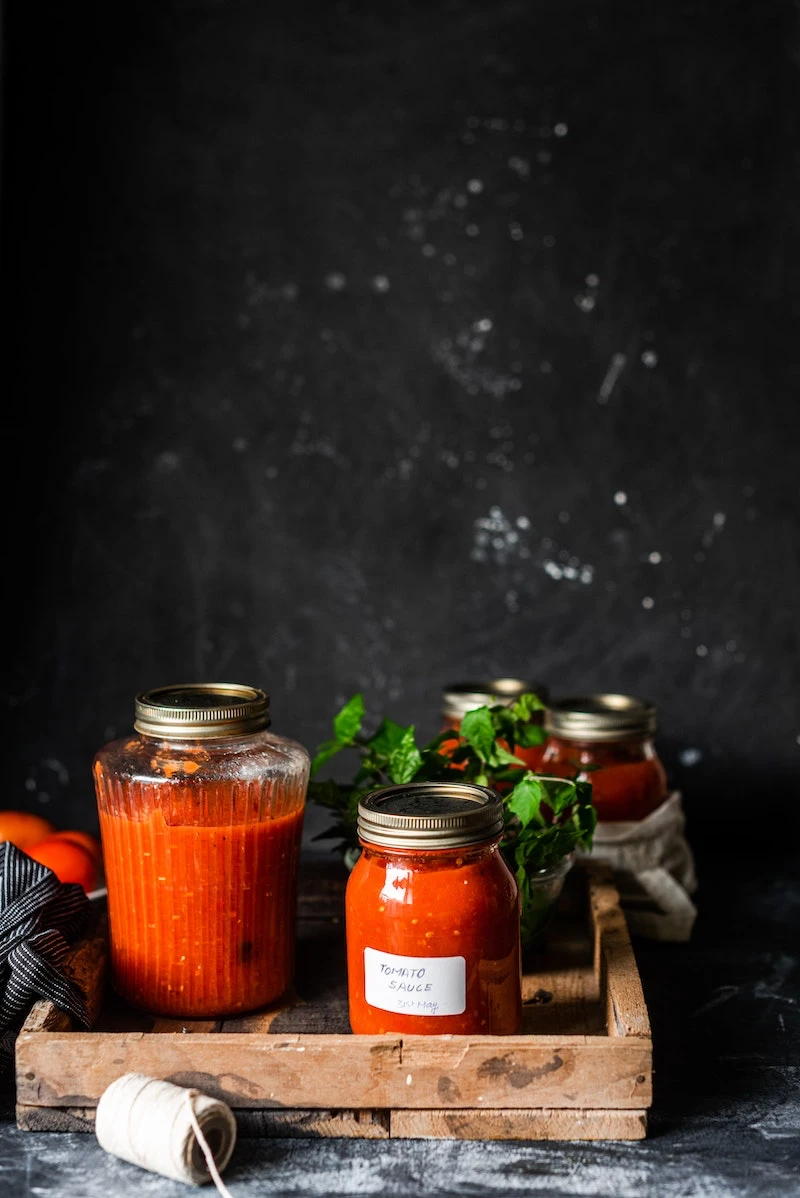
Whole Grains and Brown Rice
Ever wonder why white flour lasts forever? It’s because the good stuff—the bran and the germ—has been stripped out. Those parts contain oils, and just like with nuts, those oils can go bad. This means your whole wheat flour, brown rice, cornmeal, quinoa, and oat flour have a much shorter shelf life.
I once had to throw out a huge, expensive bag of beautiful stone-ground whole wheat flour because someone stored it in a warm corner for a month. The bread we made tasted awful. A quick smell test is all you need: it should smell mildly sweet or nutty. If it smells dusty or bitter, it’s done.
The Pro Move: Treat these like perishable goods. Store them in airtight containers or freezer bags in the fridge or, even better, the freezer. They’ll taste fresher and last for months longer.
The Flavor Faders: They Won’t Hurt You, But They Won’t Help You Either
This next group won’t become dangerous in the pantry, but their quality will absolutely nosedive. You paid for flavor—so protect it.

Ground Spices and Dried Herbs
The delicious smell of spices comes from volatile oils. “Volatile” means they evaporate easily. Heat and air are their worst enemies. That trendy spice rack above your stove? It’s actively destroying your spices with every meal you cook.
The Pro Move: Buy whole spices when you can and grind them yourself. For pre-ground spices, buy small amounts and store them in a cool, dark cabinet. A quick tip: crush a little of a ground spice in your palm and sniff. If the aroma is weak, it’s time for a replacement. It’s not adding anything but color at that point.
Pure Maple Syrup
Let’s be clear: we’re talking about 100% pure maple syrup, not pancake syrup (which is mostly corn syrup and preservatives). Real maple syrup is just boiled sap. Once you break that factory seal, it can grow a specific, harmless-but-gross type of mold on the surface. Because of its high sugar content, it won’t spoil like other foods, but nobody wants to see fuzzy stuff floating in their syrup.
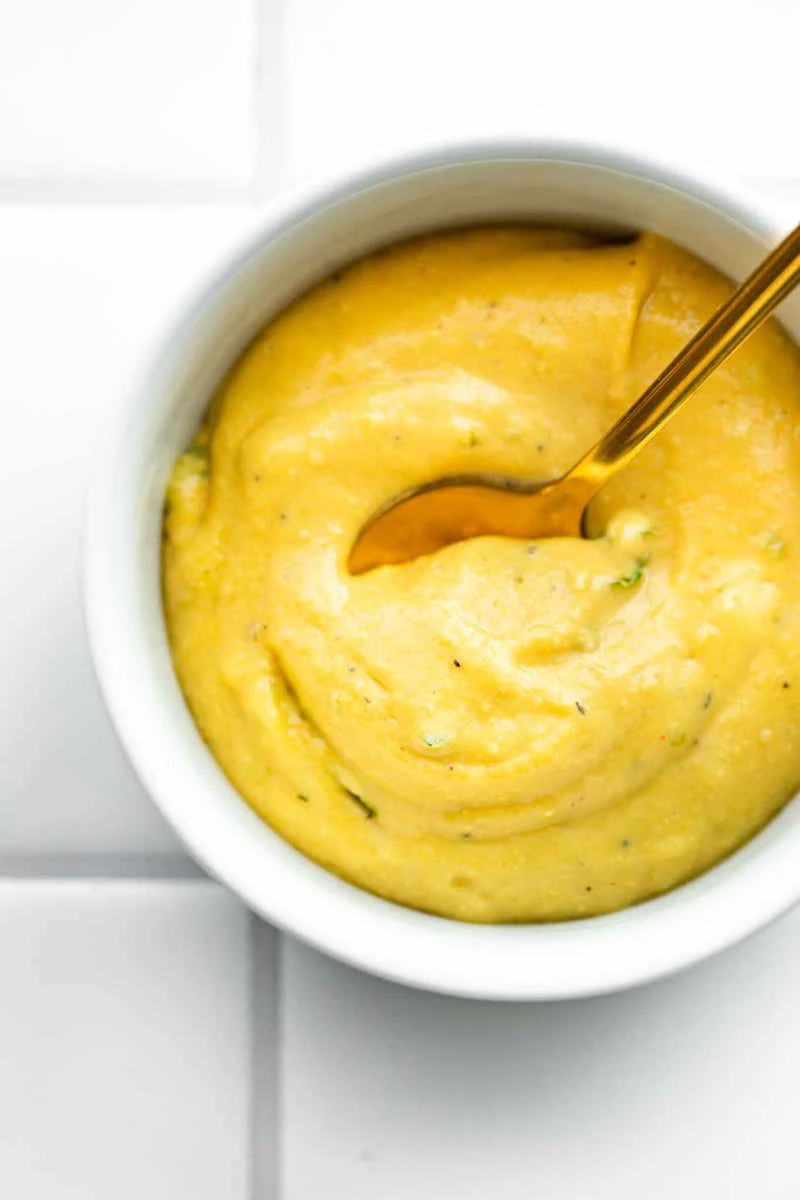
The Pro Move: As soon as you open it, store it in the fridge. It will last for a year or more in there. If you do see mold, the official advice is to discard it. Not worth the risk.
Mustard (Especially the Good Stuff)
Mustard won’t go bad in the pantry, thanks to vinegar. But its famous ‘kick’ will absolutely disappear. The compounds that give mustard its sharp, sinus-clearing bite break down with warmth and time. A six-month-old pantry mustard is a dull, sad version of its former self.
The Pro Move: All opened mustards belong in the fridge. Period. Quick challenge: The next time you’re at the grocery store, smell a fresh jar of Dijon from the shelf. Then go home and smell the one that’s been in your pantry door for a year. You’ll be amazed at the difference.
The ‘Refrigerate After Opening’ Crew: This Is a Safety Issue
This part is non-negotiable. Many of these items seem safe because they’re acidic or sugary, but once opened, they’re a playground for bacteria and mold.
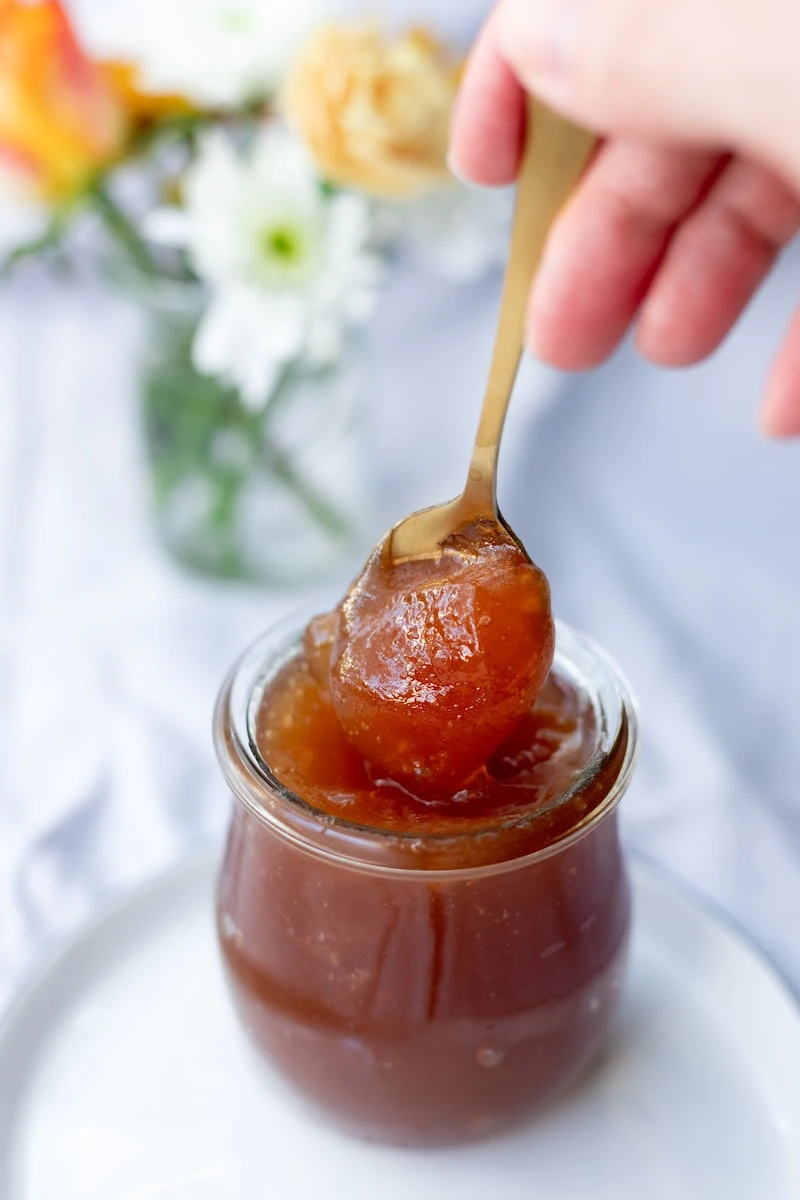
Things like ketchup, jams, and tomato sauce are often seen on restaurant tables, but those get used up in a day or two. At home, that jar might sit for months. Opening it introduces airborne spores. And with the modern trend of lower-sugar and lower-salt products, these items have fewer natural preservatives than they used to.
A serious warning about mold: I know, I know, your grandma might have just scraped the mold off the jam and served it. We know better now. Molds can create nasty toxins that spread with invisible roots (called mycelia) throughout the entire jar. You can’t just scoop it out. For the $4 cost of a new jar of jam, it is absolutely not worth the risk. When in doubt, throw it out.
The Pro Move: Read the label. If it says “Refrigerate After Opening,” do it right away. A great hack for tomato paste is to scoop tablespoon-sized portions onto a small tray, freeze them, and then transfer the frozen pucks to a freezer bag. No more fuzzy half-used cans!
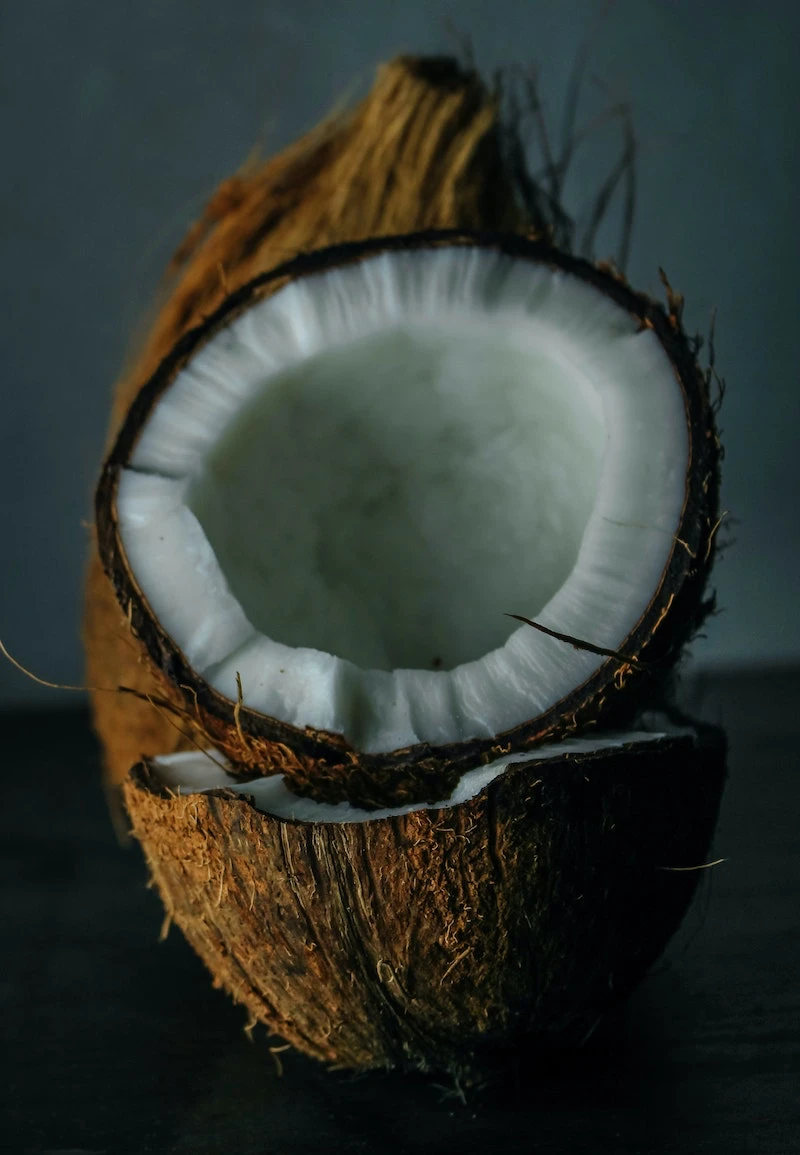
The Tricky Ones: Where It Gets Complicated
Some foods defy simple rules. The best storage spot depends on your home and how fast you use them.
Bread
Believe it or not, the refrigerator is the WORST place for fresh bread. It makes bread go stale faster through a process called starch retrogradation. For a crusty loaf, store it cut-side down on a cutting board. For a soft sliced loaf, a bread box is ideal. For anything you won’t eat in 2-3 days, the freezer is your best friend—it completely halts the staling process. Slice it before you freeze it, and you can toast it straight from frozen.
The one exception? If you live in a very hot, humid place where bread molds in a day, the fridge is the lesser of two evils. You’re trading better texture for safety.
Potatoes and Onions
These two are frenemies. They both like cool, dark, and well-ventilated spots, but they should never be stored together. Onions release a gas that makes potatoes sprout. The fridge is bad for both: it turns potato starch to sugar (making them sweet and brown too fast when cooked) and makes onions soft and moldy.
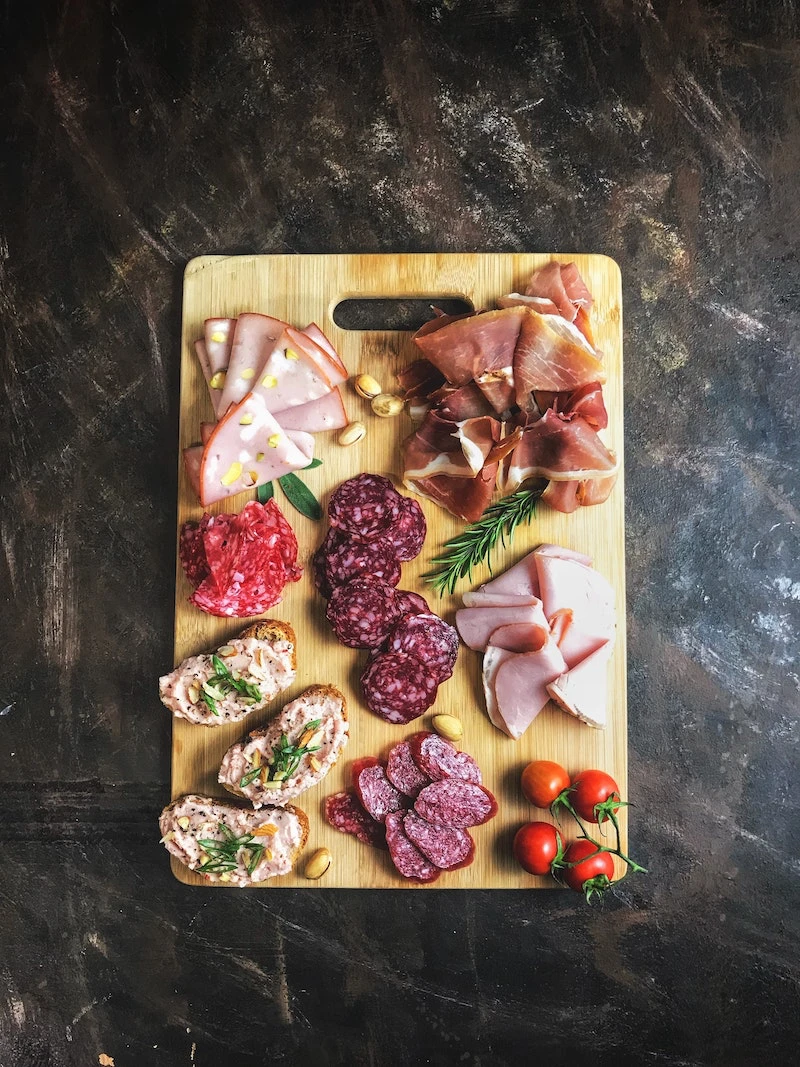
No Root Cellar? No Problem. If you’re in a small or warm apartment without a cool basement, here’s your strategy: buy less, more often. Purchase only what you’ll use in a week. If you absolutely must choose between a warm pantry and the fridge, the pantry is still better for onions. For potatoes, the fridge is a last resort—just know they’ll be sweeter and won’t make great fries.
Lightning Round: What About…?
I get these questions all the time, so let’s clear them up quickly:
- Honey: Keep it in the pantry. It’s one of the few foods that truly never spoils. If it crystallizes, just place the jar in a bowl of warm water to loosen it up. The fridge will make it rock-solid.
- Vinegar: Pantry. Its high acidity makes it its own preservative.
- Soy Sauce: This is a debate, but I say fridge. It won’t spoil in the pantry, but it will lose its complex flavor over time. Refrigeration keeps it tasting better for longer.
- Hot Sauce: It depends. A vinegar-based one (like Tabasco) is fine in the pantry. But many modern craft hot sauces have more fresh ingredients like fruit or vegetables and less vinegar. Check the label—if it says refrigerate, do it.
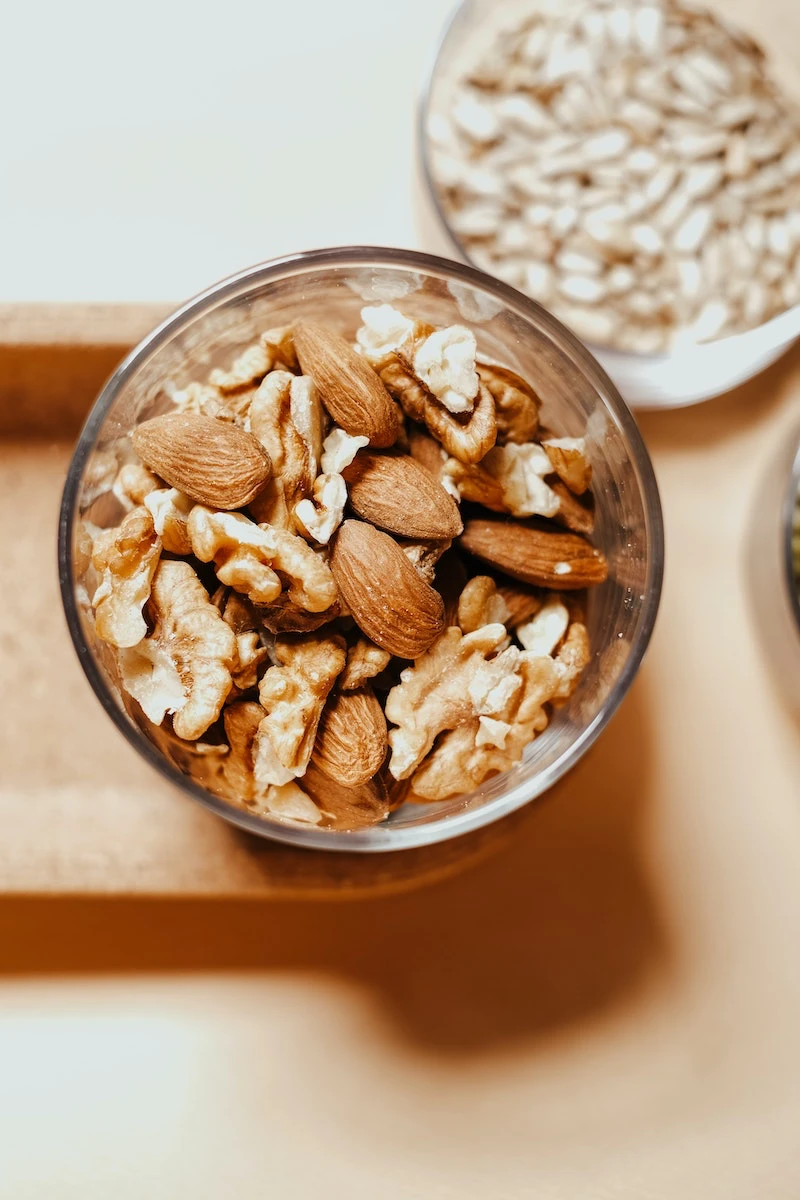
Ready to Upgrade Your Pantry? Here’s Your Shopping List
Treating your food right starts with having the right tools. You don’t need to spend a fortune.
- Airtight Containers: This is the most important one. For a budget-friendly option, you can’t beat clear plastic deli containers. A pack of 24 costs about $15 online. If you want to invest, OXO Pop containers are fantastic, with sets starting around $50.
- A Labeling System: It can be a fancy label maker or just a roll of masking tape and a Sharpie. Label what’s inside and the date you stored it.
- Good Freezer Bags: Don’t cheap out here. Get the thick, brand-name freezer bags. They cost a little more but do a much better job preventing freezer burn.
A final quick tip: As you move more things to the fridge, dedicate one shelf—maybe in the door—as your new “extended pantry.” Keep your nuts, mustards, and syrups there so you don’t lose them behind the milk. And always remember the golden rule from every professional kitchen: When in doubt, throw it out.

Disclaimer: This is all general advice from years of experience. Always follow the storage instructions on labels. For specific safety questions, the USDA’s FoodKeeper app is an amazing and reliable resource.
Inspiration:
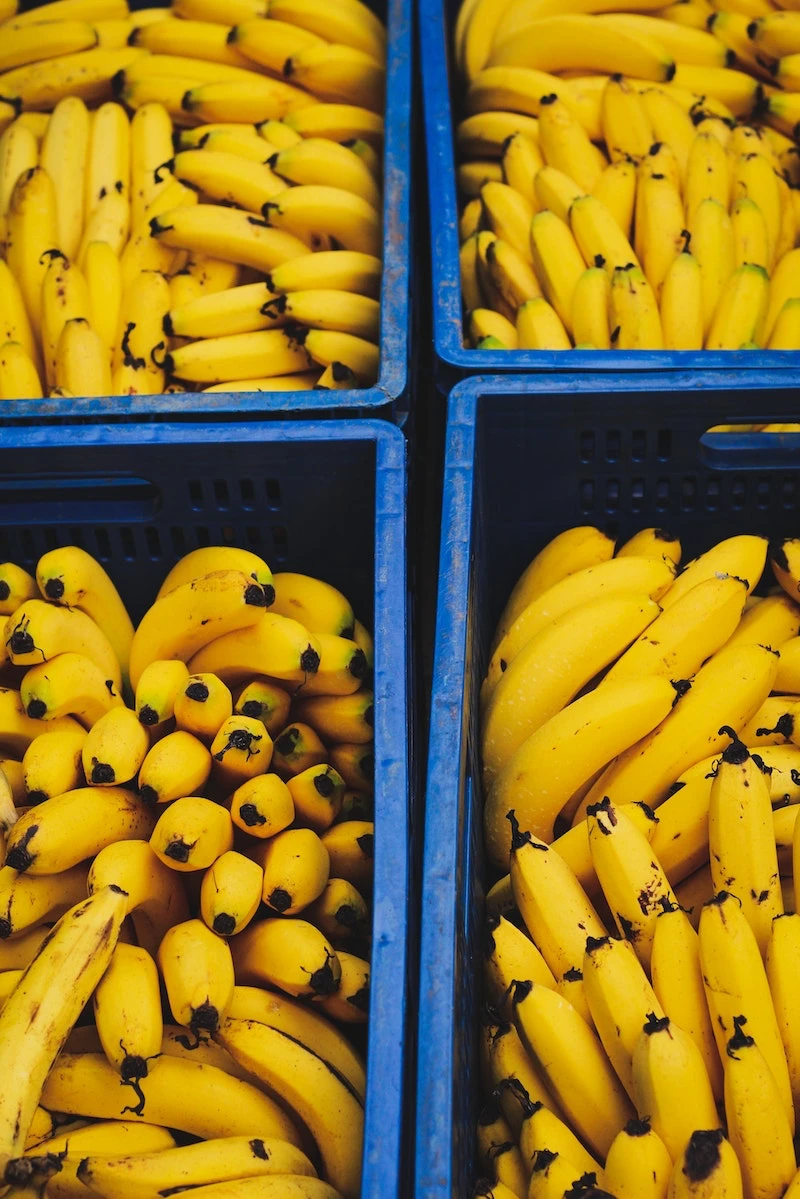

Standard Airtight Containers: Great for everyday items like pasta, crackers, and cereal. Brands like OXO Pop offer a fantastic seal with a simple press, effectively keeping moisture and pantry pests out. They are the workhorse for maintaining basic freshness.
Vacuum-Seal Systems: The next level for fighting oxidation. This is your best defense for expensive, high-fat items like coffee beans, nuts, and whole-grain flours. By actively removing air, systems like FoodSaver dramatically slow down the process of oils going rancid, preserving peak flavor for months, not weeks.
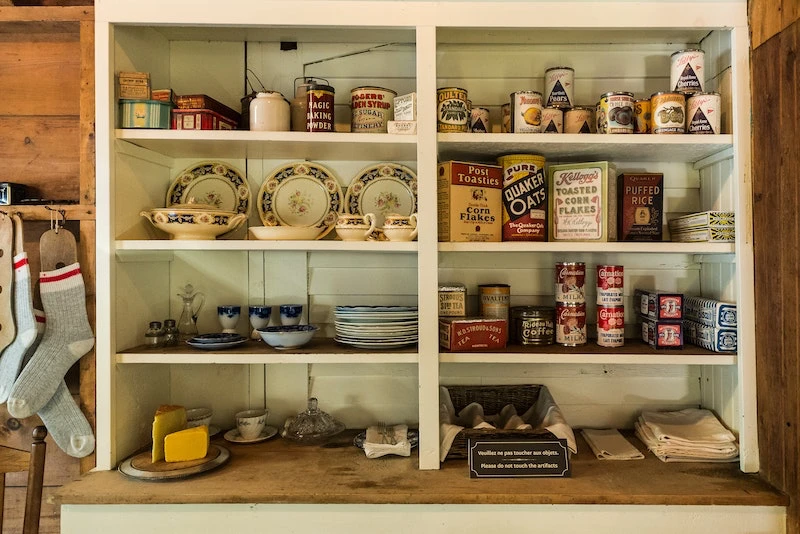
Did you know that red wine’s enemy is the same as your guacamole’s? Oxygen.
Once you uncork a bottle, air begins to flatten its complex aromas and flavors. For a simple red you plan to finish in a day or two, re-corking it tightly is fine. But for a better bottle, invest in a wine preserver pump. These simple gadgets remove most of the oxygen from the bottle, giving you several extra days of near-perfect taste.
Why do my potatoes sprout so fast?
You’re probably storing them with your onions. Onions release ethylene gas, a natural ripening agent that tells nearby potatoes it’s time to sprout. To maximize the life of both, store them separately. Keep your potatoes in a cool, dark, and well-ventilated spot (a paper or burlap bag is perfect), and keep your onions in a place with good air circulation, but never in a sealed plastic bag.










